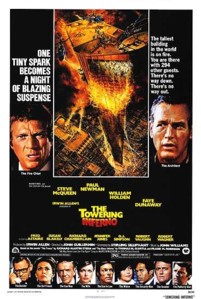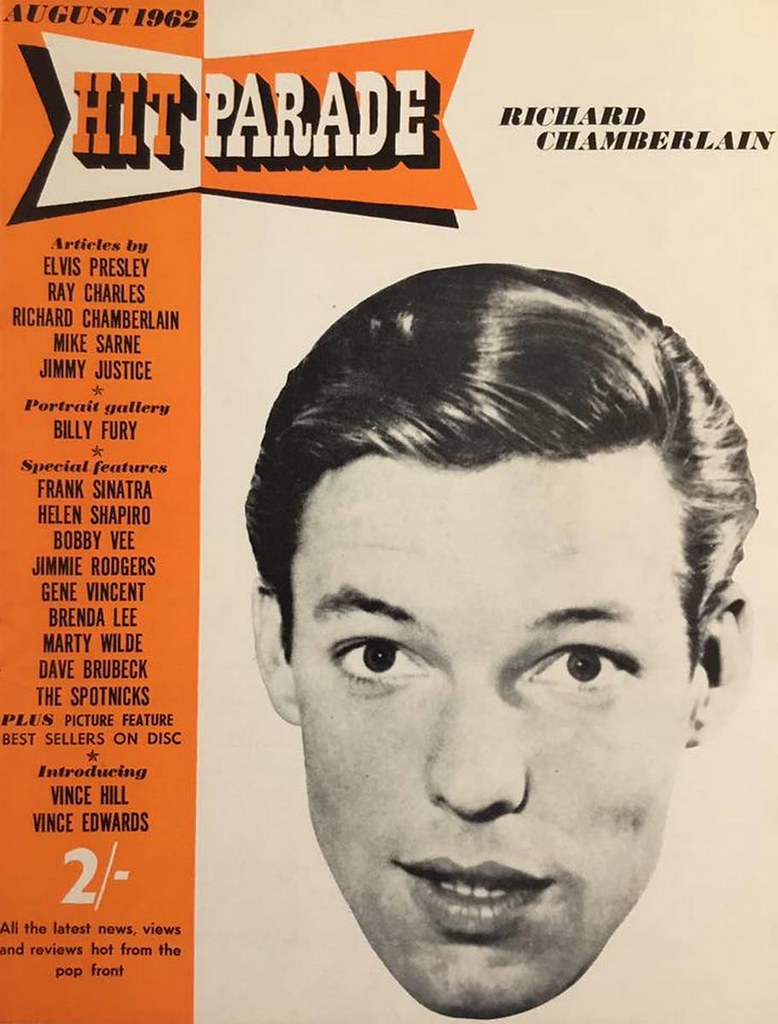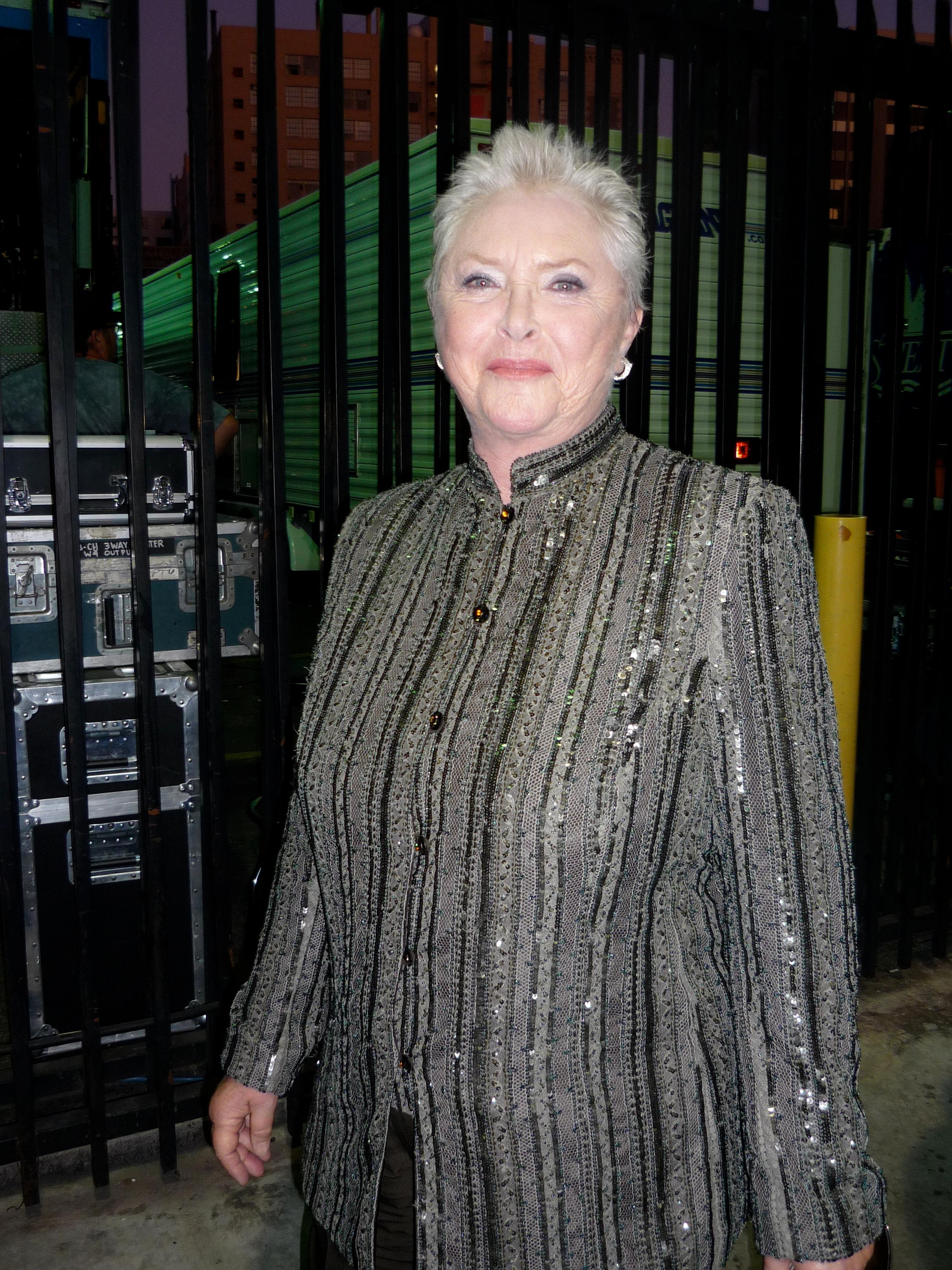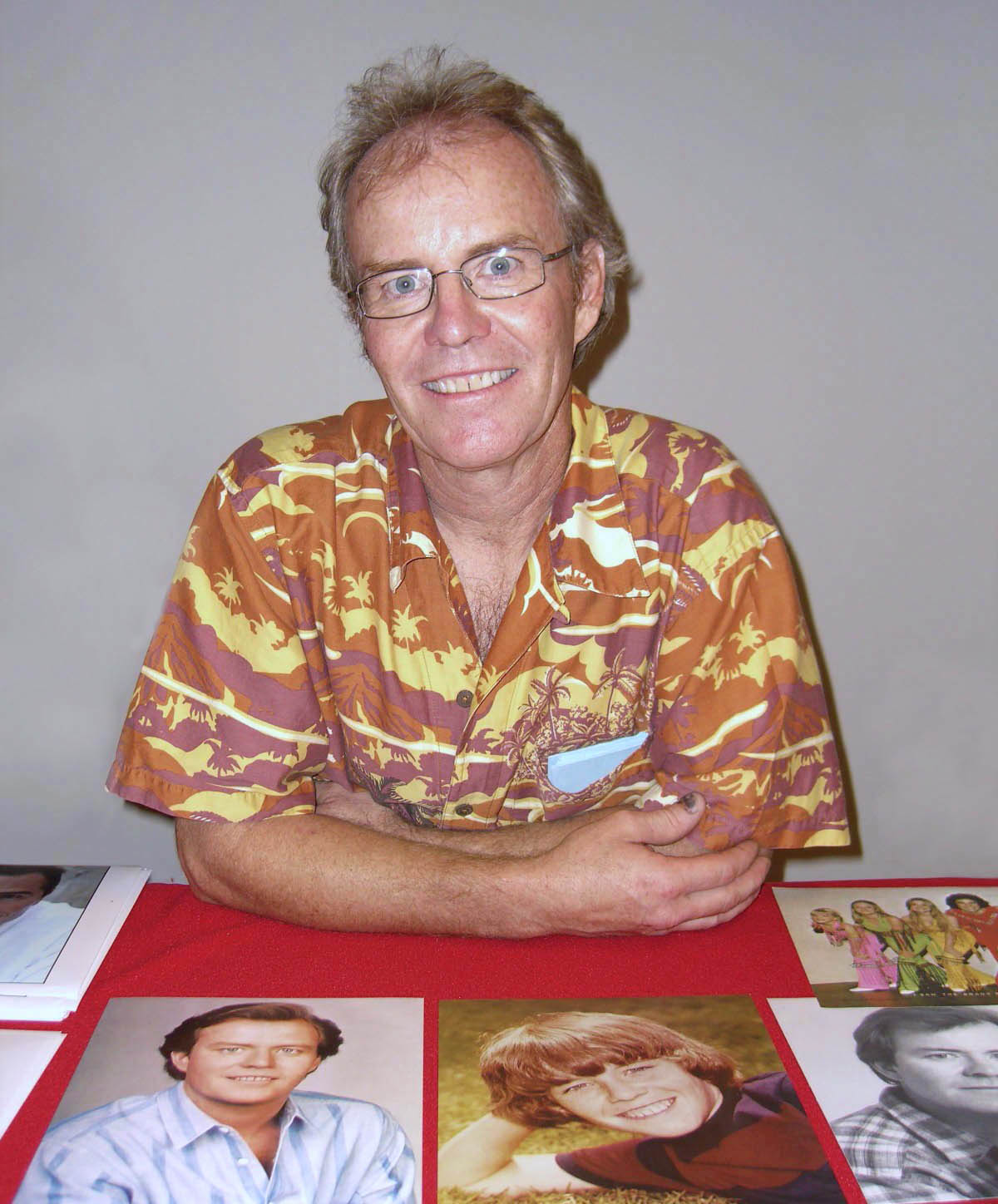
Fifty years have passed since the scorching cinematic spectacle of “The Towering Inferno” first graced the silver screen, captivating audiences with its thrilling narrative of a skyscraper ablaze and an ensemble cast battling for survival. This 1974 American disaster film, directed by John Guillermin and produced by the legendary Irwin Allen—nicknamed the “Master of Disaster”—was a monumental hit, proving that even as the New Hollywood era championed artistic rebellion, there was still a massive appetite for grand-scale, star-studded cinematic events. It was a movie that dazzled with its scale, stunts, and then-newfangled special effects, playing smashingly with Academy Awards voters who lavished it with eight nominations, including Best Picture, ultimately winning three Oscars for Best Song, Best Cinematography, and Best Editing.
“The Towering Inferno” wasn’t just a technical marvel; it was a testament to the power of star wattage, featuring a veritable who’s who of Hollywood talent. While iconic leading men like Paul Newman and Steve McQueen headlined the cast, and many other celebrated performers contributed to its success, the passage of time means that most of its cast has, as the saying goes, “moved on to the highest high-rise of them all.” Yet, as the film celebrates its 50th anniversary, it’s a heartwarming thought that some of the main cast are indeed still around, their legacies firmly cemented in cinematic history and their lives continuing to inspire. It’s a moment to appreciate the enduring careers of these remarkable individuals who helped bring one of the most memorable disaster films to life.
Join us as we take a closer look at the careers and lasting presence of these incredible talents, showing them some much-deserved love while they are still with us. Their contributions to “The Towering Inferno” and the broader entertainment landscape are indelible, and their stories offer a fascinating glimpse into the evolution of Hollywood and the resilience of true stars. From Oscar winners to prolific television personalities, these actors carved out unique paths that continue to resonate with fans old and new. It’s a celebration of their lives, their art, and the unforgettable inferno they helped create.

1. **Faye Dunaway**
When Irwin Allen and 20th Century Fox cast “The Towering Inferno,” they weren’t just aiming for big names; they secured one of the most sought-after female leads of the 1970s in Faye Dunaway. By 1974, Dunaway was in the midst of arguably the best year of her career, boasting a trio of significant films including “The Four Musketeers,” “The Towering Inferno,” and the critically acclaimed “Chinatown,” for which she earned her second Best Actress nomination. Her presence in “The Towering Inferno” as Susan Franklin, Doug Roberts’ fiancée, lent the movie a greater degree of prestige than its genre might typically command, showcasing her undeniable star power even in a role that, as the context notes, didn’t give her an abundance of dramatic heavy lifting.
Dunaway had already cemented her status as an instant superstar in 1967 with Arthur Penn’s pivotal New Hollywood masterpiece, “Bonnie and Clyde.” Her intense performances and striking screen presence made her a compelling figure throughout the era. Her talent was finally recognized with a Best Actress Oscar win two years after “The Towering Inferno” for her electrifying role in “Network,” a performance she famously almost didn’t deliver, as she was nearly fired from the project. Her ability to embody complex, often tormented characters became her trademark, solidifying her place as one of the most formidable actresses of her generation.
Despite her immense success, Dunaway’s career faced some interesting turns. In 1981, her portrayal of a child-abusing Joan Crawford in “Mommie Dearest” proved to be a controversial choice, with Dunaway herself later regretting the performance. However, as the context points out, she is “singularly spectacular in the film,” demonstrating her commitment to inhabiting even the most challenging roles. The projects that followed this period, while perhaps not reaching the towering heights of her 1970s work, still saw her delivering noteworthy performances, such as those in “Barfly,” “The Temp,” and “The Yards,” showcasing her continued versatility.
Even with the ebb and flow of Hollywood’s opportunities, Faye Dunaway’s impact has never truly faded. An Emmy-winning guest appearance on a 1993 “Columbo” special reminded audiences of her formidable talent, even if she “struggled to find parts worthy of her phenomenal talent” in later years. Today, at 83, this living legend continues to captivate, with a documentary on her life recently premiering to enthusiastic reviews at the Cannes Film Festival. Furthermore, fans can anticipate seeing her “strut her sui generis stuff” alongside Harvey Keitel and Mena Suvari in the upcoming supernatural love story “Fate,” proving that Dunaway’s fire is still very much burning bright.
Read more about: Hollywood’s Infamous Landmines: 14 Films That Absolutely Decimated A-List Careers

2. **Susan Blakely**
Susan Blakely was already making waves as a rising star when she secured the role of William Holden’s conscience-stricken daughter in “The Towering Inferno.” Her performance contributed to the human drama amidst the towering inferno, adding a layer of emotional complexity to the gripping disaster narrative. While her big-screen presence in the film was notable, it was on the small screen where Blakely would find her most widespread acclaim and enduring success, truly establishing herself as a household name in the annals of television history.
Blakely’s defining moment arrived with her portrayal of Julie Prescott in the hugely successful 1976 ABC miniseries “Rich Man, Poor Man.” This role, as the love of Rudy Jordache’s life, earned her a Primetime Emmy Award, a testament to her compelling performance and undeniable appeal. The series was a cultural phenomenon, and Blakely’s contribution was central to its emotional resonance. Her talent was further recognized with a second Emmy nomination when she reprised her beloved role for an episode in the less acclaimed follow-up, “Rich Man, Poor Man Book II,” demonstrating the lasting impact of her character and performance.
For the remainder of her prolific career, Susan Blakely became a ubiquitous and highly respected figure in television. She specialized in television movies, becoming a reliable presence that audiences could count on for quality performances in a format that often provided rich, character-driven narratives. It’s noted in the context that it’s unclear why she never settled into a long-running series regular role, and that “it doesn’t appear that she really ever really tried,” suggesting a deliberate choice to explore diverse roles across numerous TV movies, showcasing her remarkable versatility.
While her small-screen work was abundant, Blakely also made occasional forays into feature films. Dedicated fans of “Over the Top,” for instance, fondly remember her as Sylvester Stallone’s dying wife, a poignant role that added another dimension to her filmography. More recently, she had a recurring role on NBC’s popular drama “This Is Us,” bridging her classic television career with contemporary audiences. At 75 years old, Susan Blakely hasn’t appeared in anything since 2018, leading to the lovely speculation that she “is enjoying a well-earned retirement.” Regardless of her current activities, she will forever be cherished as “our Julie Prescott,” a testament to a career defined by grace and memorable performances.
Read more about: Susan: Unveiling the Enduring Legacy, Meanings, and Cultural Journey of a Timeless Name

3. **Richard Chamberlain**
In the 1970s and 80s, few names shone brighter on television than Richard Chamberlain. He was a small-screen heartthrob from his early days as the title character in the 1960s medical drama “Dr. Kildare,” a role that undoubtedly paved the way for his later, even more massive successes. His magnetic charisma and undeniable talent led him to star in two of the most popular miniseries in television history: “Shōgun” and “The Thorn Birds.” These epic productions captivated millions and cemented his status as a major star, demonstrating his remarkable ability to command a narrative over multiple episodes and truly inhabit complex characters, earning him a place in television lore.
Chamberlain was a rare breed: a television actor who was also seen by major studios as a viable movie star. In “The Towering Inferno,” he took on a distinctly unlikable character, playing Roger Simmons, the electrical engineer whose “clandestine corner-cutting” tragically causes the skyscraper to catch fire. It’s truly impressive that in the same year, he could comfortably portray such a villainous figure while also reprising his role as the dashing Aramis in Richard Lester’s invigorating swashbuckling romp, “The Four Musketeers,” showcasing his incredible range and ability to transition between vastly different genres and character types with ease.
Blessed with looks, talent, charisma, and, for the most part, good taste in projects, Chamberlain delivered superb performances throughout his career. His work in Peter Weir’s “The Last Wave” is particularly noteworthy, demonstrating his depth and dramatic capabilities. He consistently seemed to pick winners when he returned to television, maintaining a high standard of quality. However, it was somewhat surprising when his star began to fade relatively quickly in the mid-1980s. This period saw him take on roles in Golan-Globus–produced “Raiders of the Lost Ark” knock-offs like “King Solomon’s Mines” and “Allan Quatermain and the Lost City of Gold.” While these films were based on H. Rider Haggard’s adventure yarns and held franchise potential, the context notes that Cannon, the studio, merely “wanted uninspired xeroxes of Spielberg’s blockbusters,” a less-than-ideal direction for a star of Chamberlain’s caliber.
The context highlights a particularly frustrating turning point in Chamberlain’s career: when a French magazine outed him as gay in 1989 (a fact he would not confirm until 2003), his opportunities “infuriatingly dried up.” This unfortunate reality of Hollywood at the time underscores the challenges many LGBTQ+ actors faced. Nevertheless, it was a genuine joy for fans to see Chamberlain make a welcome return to the screen in the fourth episode of “Twin Peaks: The Return” seven years ago, a performance that proved his enduring talent. At 90 years old, while we haven’t seen much of him since, Richard Chamberlain deserves nothing but happiness, his remarkable career leaving an undeniable mark on both big and small screens.
Read more about: The Maestros of Melody: Unveiling the Irreplaceable Legacies of Classical Music’s Defining Composers

4. **Robert Wagner**
Early in his career, Hollywood studios held high hopes for Robert Wagner, envisioning him as a major star. With his undeniable handsomeness, he certainly looked the part of a leading man. However, as the context points out, he “never really caught fire” in the way anticipated, possibly due to a perceived stiffness in his performances. Furthermore, the context rather humorously notes that Wagner struggled to “generate a scintilla of ual chemistry with any of his co-stars,” even with Stefanie Powers on the “bafflingly popular ABC detective series ‘Hart to Hart.'” This candid assessment highlights an interesting aspect of his screen persona, which, despite these observations, still resonated with a significant audience.
Where Wagner truly excelled, however, was in embodying characters that played to a different strength. He was, according to the context, “pure perfection” as Dan Bigelow, the smug public relations officer who inadvertently “starts the titular conflagration” in “The Towering Inferno.” His role as an antagonist, albeit a less overtly malicious one, suited his on-screen presence perfectly. In a film filled with escalating tension, Wagner’s character is one of the first “big names to get immolated,” and there’s a certain satisfaction in his demise that the narrative offers, making him a memorable early casualty of the disaster.
Bigelow’s fiery exit in “The Towering Inferno” is, in fact, highlighted as his “second most satisfying big-screen death,” following his climactic offing as the sleazebag gold-digger protagonist in the classic 1950s film noir “A Kiss Before Dying.” These roles demonstrate Wagner’s capacity to play characters whose departures are met with a certain narrative gratification, perhaps capitalizing on that very stiffness that may have hindered his romantic leading man aspirations. It’s a testament to his versatility that he could make such an impact, even in roles designed for a dramatic exit.
Now, at 94 years old, Robert Wagner has reportedly “called it quits,” having not acted since 2017. While Millennials might best know him as Number 2 in the iconic Austin Powers series, his legacy is most certainly defined by his tempestuous marriage to Natalie Wood. This relationship tragically concluded when Wood was found drowned a mile from the yacht where she, Wagner, and Wood’s “Brainstorm” co-star Christopher Walken had been. The context carefully notes that it “is not the place for speculation,” but acknowledges that Wagner was named a person of interest when the case was reopened in 2018, and that Wood’s body was found with “fresh bruises.” The case remains open and unresolved, adding a somber, lingering note to the remarkable life and career of Robert Wagner.
Read more about: The Maestros of Melody: Unveiling the Irreplaceable Legacies of Classical Music’s Defining Composers

5. **Susan Flannery**
Susan Flannery’s role in “The Towering Inferno” as Lorrie, the secret lover and secretary to Robert Wagner’s Dan Bigelow, might have been secondary to the main protagonists, but her performance was undeniably impactful. While the film was a major big-screen spectacle, Flannery had already built a solid foundation in television, having acted regularly for over a decade. This included a significant tenure on the beloved soap opera “Days of Our Lives” and appearances in two feature films, establishing her as a familiar and capable face before she stepped into the inferno.
Her portrayal in the film was so effective, in fact, that it earned her the Golden Globe for New Star of the Year in 1974. This triumph, however, came with a curious footnote, as the award itself was discontinued years later amidst controversy surrounding another recipient. Nonetheless, the recognition underscored Flannery’s ability to command attention, a talent highlighted by the observation that she “blows Wagner off the screen” in their shared scenes, bringing a compelling dynamic to their ill-fated characters and their intertwined narrative threads within the burning skyscraper.
Despite her clear talent and the momentum from “The Towering Inferno,” Flannery faced significant obstacles in securing more prominent roles on the big screen. According to gay rights activist Rita Mae Brown, her homouality, which was an open secret in Hollywood, led to her being denied “juicier roles” in the wake of the disaster epic. This unfortunate reality limited her opportunities in feature films, a poignant reminder of the challenges faced by many actors during that era, regardless of their undeniable abilities and critical acclaim from earlier work.
While the silver screen’s doors may have been less open, Susan Flannery found a well-deserved resurgence and a loyal following on television. Her memorable comeback on the iconic soap opera “The Bold and the Beautiful” in 1987 saw her once again delivering compelling performances, cementing her place in the hearts of daytime drama enthusiasts. For those outside the world of soaps, her presence in films like “The Gumball Rally” alongside “The Towering Inferno” remain definitive points in her filmography.
Today, at 84 years old, Susan Flannery’s legacy extends beyond acting. In the late 2000s, she gracefully segued into directing soaps, proving her multifaceted talent and continuing her contribution to the television landscape she helped define. Her journey stands as a testament to resilience and talent, reminding us of the rich, often complex, careers that unfold both on and off screen, and the indelible mark she left on an iconic disaster film and television history.

6. **Felton Perry**
Felton Perry’s role in “The Towering Inferno” as Scott, an SFFD Engine Co. 4 fireman, places him squarely in the heart of the film’s heroic efforts to combat the catastrophic blaze. While his character might not have been among the top-billed names, his presence was crucial to grounding the film’s grand spectacle in a sense of realism and illustrating the immense scale of the disaster response. As one of the many brave firefighters battling the inferno, Perry’s character contributed to the film’s intense portrayal of dedication and danger faced by first responders in one of cinema’s most memorable high-rise catastrophes.
The SFFD, led by Steve McQueen’s Chief Michael O’Hallorhan, forms the backbone of the rescue and firefighting operations within the film. Perry’s character, as part of Engine Co. 4, represents the countless individuals who put their lives on the line. The narrative frequently shifts between the trapped civilians and the relentless work of the fire department, showing them ascending the burning structure, bringing the fire under control on lower floors, and attempting to reach the guests stranded on the 135th floor. These coordinated efforts, though often fraught with peril, underscored the film’s theme of human perseverance against overwhelming odds.
In a disaster epic like “The Towering Inferno,” the ensemble cast is paramount, with every role, no matter how brief, playing a vital part in building the immersive tension and grand scope. Felton Perry’s portrayal of a working firefighter adds to the authenticity of the emergency. His character helps convey the sheer physical and strategic challenges involved in battling a blaze in the world’s tallest building, from navigating smoke-filled stairwells to attempting dangerous rescues. The collective actions of characters like Scott contribute to the film’s powerful depiction of a city’s emergency services mobilized to save lives.
The film itself meticulously details the progression of the fire and the various strategies employed by the SFFD, including the desperate attempt to blow up water tanks on the roof as a last-ditch effort. While specific scenes featuring Felton Perry’s character might not be extensively highlighted in the plot synopsis, his inclusion as a named fireman underscores the importance of every individual in the chain of command and action. It’s the aggregation of these individual efforts that ultimately dictates the course of the disaster and the survival of the trapped occupants, making every fireman a small, yet significant, piece of the larger heroic mosaic.
Felton Perry’s contribution, alongside the broader SFFD team, reinforces the film’s core message about the bravery and dedication required in such extreme circumstances. The presence of dedicated firefighters like Scott brings a necessary human element to the technical and structural challenges presented by the inferno. His character symbolizes the countless unsung heroes who confront unimaginable dangers to protect others, solidifying his integral, if understated, place in one of the most celebrated disaster films ever made. While the provided context does not elaborate on his career beyond this film, his presence here is undeniably a part of its enduring legacy.
Read more about: Robert Mitchum: The Unflinching Gaze of a Noir Icon’s Life and Legacy

7. **Mike Lookinland**
In the harrowing narrative of “The Towering Inferno,” Mike Lookinland played Phillip Allbright, one of the two children (along with Carlena Gower’s Angela Allbright) caught in the blazing skyscraper. His role was pivotal in heightening the emotional stakes of the film, as the plight of children in peril naturally amplifies the audience’s sense of urgency and fear. The dramatic tension surrounding Phillip and his sister, trapped with their deaf mother, Mrs. Allbright (played by Carol McEvoy), on the 87th floor, became a central point of the rescue efforts, drawing in characters like Lisolette Mueller and Security Chief Jernigan.
The scenes involving the Allbright children are particularly gripping, underscoring the profound human cost of the disaster. As the fire rages and escape routes become increasingly limited, the vulnerability of Phillip and Angela is palpable. Lisolette Mueller, a guest and resident of the tower who is being wooed by con man Harlee Claiborne, rushes to check on them, demonstrating the powerful human instinct to protect the innocent. This act of selflessness, motivated by the dire situation of the children, adds a layer of emotional depth to the already intense rescue operations.
The children’s journey through the burning tower highlights the sheer danger and the desperate measures taken for survival. Security Chief Jernigan manages to rescue the mother, but a ruptured gas line explosion destroys the stairwell, further isolating the children with Lisolette. Their subsequent traverse through wreckage to a service elevator, and their eventual reunion with Doug Roberts and the others, is a testament to the film’s relentless pacing and its focus on the minute-by-minute struggle for life. Mike Lookinland, as Phillip, embodied the innocent victims caught in this architectural nightmare, making their survival a key emotional objective for both the characters and the audience.
The inclusion of children in disaster films is a classic cinematic device used to intensify the narrative and generate maximum empathy. In “The Towering Inferno,” Phillip and Angela’s predicament serves this purpose masterfully. Their survival, or the threat thereof, directly influences the actions and sacrifices of adult characters, driving much of the plot’s emotional thrust. The relief felt when they are seemingly safe, followed by renewed peril, ensures that the audience remains deeply invested in the outcome, cementing the Allbright children’s place as memorable, albeit terrifyingly vulnerable, figures in the film.
Mike Lookinland’s performance, within the confines of a child actor’s role in such an intense environment, was crucial for conveying the sheer terror and fragility of life amidst the chaos. While the provided context does not offer further details on his career or current activities, his presence as Phillip Allbright contributed significantly to the emotional core of “The Towering Inferno.” His character represents the ultimate stakes of any disaster: the protection of the most vulnerable among us, making his contribution an indelible part of the film’s enduring impact and its powerful narrative of survival.
Read more about: From Bell-Bottoms to Boardrooms: Your Favorite Child Stars of the 60s and 70s – And Where They Are Now

8. **Maureen McGovern**
Maureen McGovern’s contribution to “The Towering Inferno” is uniquely intertwined with one of the film’s most celebrated aspects: its music. Although not explicitly listed in the main cast credits within the film itself, she is recognized in the extended cast list as the ‘Singer at the party.’ Her presence helps set the initial tone of opulence and celebration at the skyscraper’s dedication ceremony in the Promenade Room on the 135th floor, an atmosphere that dramatically contrasts with the terror that soon engulfs the building. This deliberate artistic choice underscores the film’s initial grandeur before its descent into a gripping survival story.
The 1974 American disaster film was not only a box office sensation but also a critical darling, garnering eight Academy Award nominations, including Best Picture. Crucially, it won three Oscars, one of which was for Best Song. This accolade highlights the significance of the film’s musical score and its featured vocal performances in enhancing the cinematic experience. McGovern’s role as the singer at the lavish party is inextricably linked to this musical dimension, providing the soundtrack to the sophisticated pre-disaster revelry that eventually gives way to unimaginable horror, adding a layer of ironic beauty to the film’s opening.
The early scenes of “The Towering Inferno” are designed to establish the magnificent, seemingly unassailable nature of The Glass Tower and the high society gathered within its dizzying heights. A live musical performance, such as the one delivered by McGovern’s character, contributes to this atmosphere of elegance and false security. It allows the audience to fully appreciate the dramatic shift when the fire breaks out, transforming a scene of joyful celebration into one of chaotic struggle. Her performance, even as a background element, helps to anchor the film’s narrative arc from triumph to catastrophe.
In many ways, the singer’s presence serves as a temporal marker, capturing the last moments of blissful ignorance before the inferno takes hold. While her character’s fate or personal journey is not central to the plot’s development, her vocal talents symbolize the height of human achievement and luxury that the skyscraper represents—a height that is soon challenged and nearly undone by human error and the raw power of nature. Her performance subtly foreshadows the dramatic stakes, as the music eventually fades into the sounds of alarms and screams, a stark contrast that elevates the film’s dramatic impact.
Maureen McGovern’s inclusion, even in this uncredited but recognized capacity, connects her to a film that remains a benchmark in the disaster genre and an Oscar-winning production. While the provided context doesn’t delve into her broader musical career, her appearance here is a key detail that speaks to the era’s practice of integrating musical talent to enhance a film’s atmosphere and prestige. Her voice, however brief, became a part of the fabric of this iconic movie, contributing to the rich, immersive world of “The Towering Inferno” and its enduring place in cinematic history.
Read more about: Maureen: Unveiling the Name’s Glamorous Legacy, Cultural Echoes, and Astrological Secrets
As we close the chapter on these remarkable individuals, it’s clear that “The Towering Inferno” wasn’t just a film; it was a phenomenon, a crucible that forged careers and left an indelible mark on cinematic history. Fifty years on, the fact that these main actors are still with us is a vibrant testament to their resilience, talent, and the unforgettable narratives they helped create. From Oscar-winning dramatic turns to crucial supporting roles that amplified the film’s tension and emotional depth, each artist contributed a unique thread to the rich tapestry of this disaster epic. Their stories, both within the burning high-rise and throughout their prolific careers, continue to captivate, reminding us of the enduring power of Hollywood’s golden age and the stars who continue to shine.



